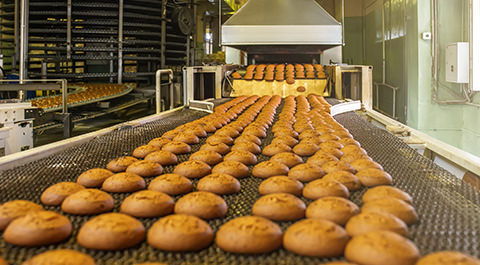In many food processing applications, hydraulic spray nozzles apply vegetable oil to food products or pans to act as a release agent. More common is to apply these oil-based agents as product moves along a conveyor. As such, in order to achieve a uniform spray coating, manufacturers must take into account product size and shape, conveyor speed, temperature, humidity and oil chemistry. Furthermore, to improve profitability, the cost per unit should be minimized, while maintaining or improving product quality. One method to improve profitability in these applications is to maximize transfer efficiency.
Transfer efficiency is the ratio of the sprayed material that ends up on the target to that which lands elsewhere (in the air, on the conveyor, etc.). Ideally, we aim to achieve a 100% transfer efficiency, meaning 100% of the spray ends up on the target and no amount of sprayed material is over-sprayed. This is incredibly difficult, if not impossible to accomplish, therefore, a transfer efficiency above 80% is acceptable. Maximizing transfer efficiency for our customers means less waste, more material and improved worker safety. So, our goal with this research study was to find the best methodology for maximizing the transfer efficiency of our hydraulic nozzles when spraying vegetable oil during food processing.


